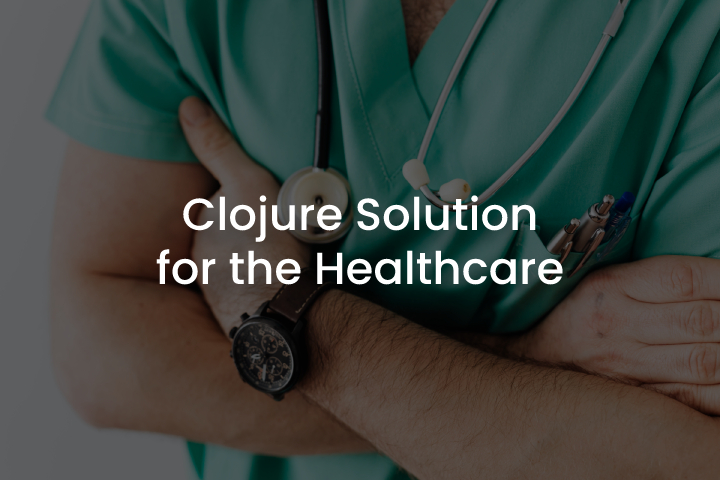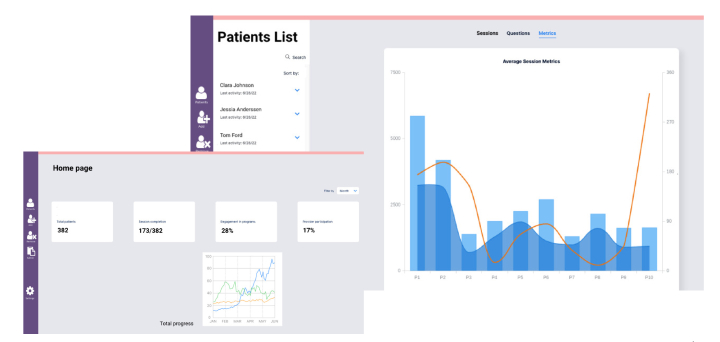Implementing Data Analysis for Operational Optimization and Increased Business Performance
Businesses today have access to more data than ever before, from customer transactions and interactions to operational metrics and financial …
 22 | 07 | 2022
22 | 07 | 2022 The telemedicine sector of healthcare has become a vital and, oftentimes, inseparable component of successful care providers. During the COVID pandemic, many facilities encountered a key problem when trying to follow the guidelines and ensure a proper distancing of the patients coming to see their providers.
Reduction of the lines in the hospitals and private facilities was a crucial step to be taken and that’s where telemedicine comes in handy. Especially, when dealing with mental health, when the timing is crucial. With the help of our client’s solution, healthcare specialists get contacted via video sessions, therefore, there’s no risk of catching the virus.
Eventually, the growing popularity among the platform’s clients led to the need of updating the existing system since it handles large scopes of data, utilizes machine learning to help detect any deviations in the patients via video and notify the doctor, etc.
In the article, we are talking about the newest updates to the platform and how our client plans on expanding the range of adjacent healthcare spheres outside mental health solely. You can follow the link to read more on the given Clojure solution.
The mobile app is built utilizing Clojure, and the web version – ClojureScript. they also have extended functionality that contains but is not limited to the video/audio/language in-app analysis (for building emotional estimations), SMS notifications, push notifications, etc.
The team is also involved in the development of other essential components such as the AI/ML model from the early stages of the app. All the materials collected from the patients, including videos, texts, automatic scores, and estimations are available to the healthcare providers and allow them to get immediate access and estimate the patient’s condition.
As the number of registered healthcare providers, therefore, their patients was growing, the development team needed to introduce updates and changes to the platform, so it doesn’t fail while operating and processing large scopes of data. In addition, there were some minor changes to the UI aiming at making the further support process simpler and less costly for the client.

In the beginning, we had a function that would transcode video into different formats. Yet, this approach would lead to system failure and files didn’t run properly. Moving forward from the recommended Amazon approach, when an event is placed onto S3 Bucket, then lambda function triggers, and so on, we decided to incorporate an additional server for video upload, and wrote function stack, which triggers after the event. With Step Functions, we made a function reusable, if input parameters differed.
This solution allows gaining more control over the system functionality as well as error detection process takes less time. Moreover, it is easier to fix any malfunctioning as it would only limit to a specific segment of the platform, without affecting the functionality of the entire system. The client also got an improved interface of the system architecture and parameters.
To expand the number of users, the platform is also set to step outside the mental healthcare sector and grow into other adjacent ones such as fitness, pharmaceutics, nutrition and dietology, and more. There is a huge market gap that we are hopeful to fill with our product.
For the past two years, the world had to learn how to transition from the majority of things we were accustomed to for the sake of societal safety. The healthcare industry was the one to encounter probably the most difficulties. And that’s the reason why it was essential to create something that’ll help reduce face-to-face doctor visits unless they are an emergency. And here’s how telemedicine became the way out of the problem.
Our solution incorporates the best technologies along with a well-thought and tested platform where mental healthcare providers would be reached out by their patients whenever there is such a need without having to wait for the actual appointment. We use machine learning to teach the system how to differentiate multiple symptoms and features like tone of voice, eye motion, speech speed, and many more. To prove the accuracy of the automatic analysis, a doctor always checks the system’s report on a given patient. So that nothing important is missing.
The solution is a great way for establishing doctor-patient communication without wasting time commuting to the appointment or waiting for one for weeks.
READ ALSO: HOW WE HELP TRANSFORM THE EUROPEAN ENERGY SUPPLY SECTOR WITH REACT-BASED SOLUTION
Businesses today have access to more data than ever before, from customer transactions and interactions to operational metrics and financial …
Conversational AI systems can engage in natural conversations and dialogue with humans. Powered by machine learning and natural language processing, …
The decision between hiring a software development company or a freelancer can be challenging for business owners who are looking …